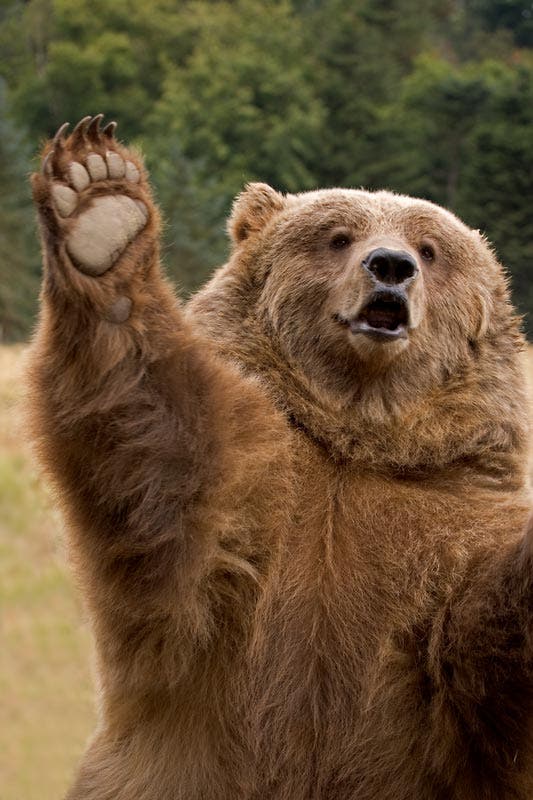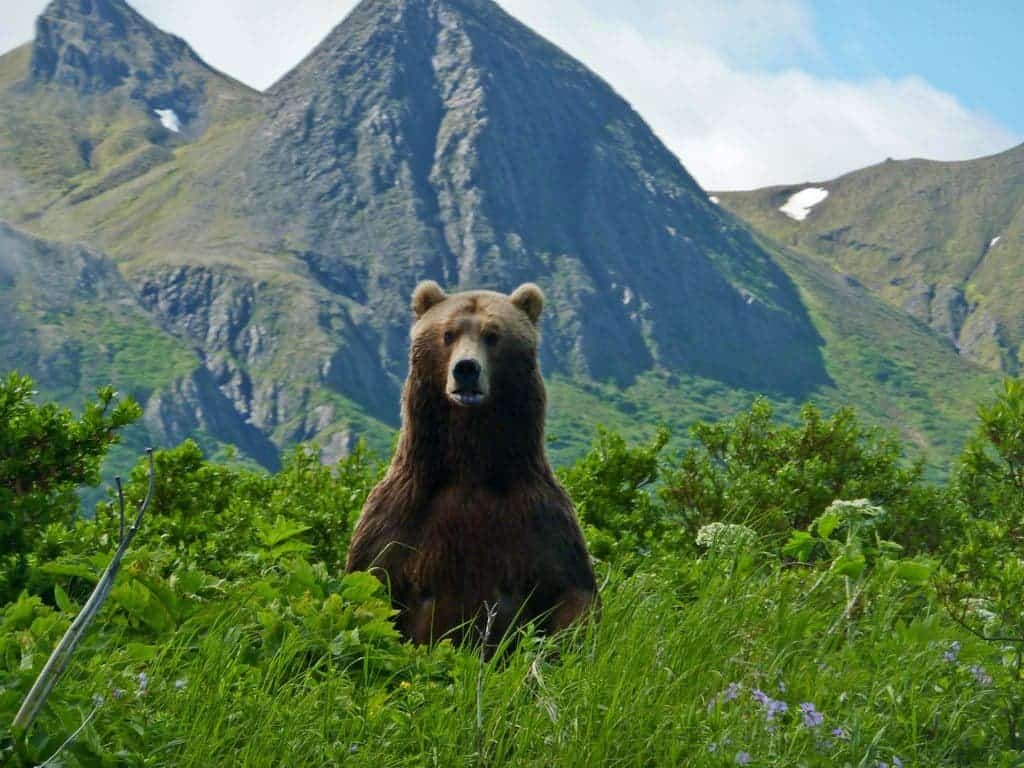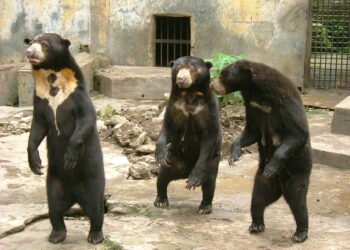
Image via: tvbythenumbers.com
A Montana family came perilously close to a grizzly bear near Yellowstone Park in the US when it jumped on the hood of their car. The family stayed in their car, kept the windows closed, and eventually the bear got bored and wandered off. But what happens if you don’t have the safety of a vehicle?
Most bears will avoid humans if they hear them coming. Pay attention to your surroundings and make a special effort to be noticeable if you are in an area with known bear activity or a good food source, such as berry bushes. Groups of people are noisier and have a more powerful smell and bears can detect them at longer distances. They are also more intimidating to the animals, so try to hike in groups if possible.
If you come close enough to a bear that it notices you, and starts paying attention to you, help the bear recognize you as a human and not a pray animal. Slowly wave your arms and calmly talk to it. Most bears don’t want to attack you, but they are quite curious. It may come closer or stand on its hind legs to get a better look or smell. A standing bear is usually curious, not threatening.
Bears may bluff their way out of an encounter by charging and then turning away at the last second. Bears may also react defensively by woofing, yawning, salivating, growling, snapping their jaws, and laying their ears back. Continue to talk to the bear in low tones; this will help you stay calmer, and it won’t be threatening to the bear. A scream or sudden movement may trigger an attack. Never imitate bear sounds or make a high-pitched squeal. Do not drop your pack, use it to protect your back, and do not allow the bear access to your food.
Bear attacks are rare; most bears are only interested in protecting food, cubs, or their space. However, being mentally prepared can help you have the most effective reaction. So what should you do when you come close enough to a bear you can high-five it? (Disclaimer: ZME Science strongly advises against high-fiving bears unless you are attended by one of our authors).

Image via: article.wn.com
“Most bear encounters end without injury. Following some basic guidelines may help to lessen the threat of danger. Your safety can depend on your ability to calm the bear,” the NPS writes.
Always face the bear comrade, slowly back away and move sideways. You shouldn’t run, as this could trigger a chase response – and bears run fast. Climbing a tree is also a bad idea as most bears will simply follow you.
When the animal charges with its head low and ears pinned back, that is defensive aggression. It may see you as a threat to its cubs or it may be protecting food. A defensive bear will stop attacking once it feels the threat – namely, you – has been removed.
If the bear stalks you, persistently approaches, and is focused on you, with its head up and ears cocked forward, that is typically curious behavior, but may be indicative of predatory intent.

Image via: morganbond.blogspot.com
Should the bear charge you during a surprise encounter, stand your ground and fight back with bear spray, sticks or rocks. Make sure you know how to properly use the spray. Always fight back if a bear attacks you in your tent or stalks you and then attacks. This last kind of attack is very rare, but can be serious because it often means the bear is looking for food and sees you as prey.
If you are attacked by a brown or grizzly bear, play dead. Leave your pack on and lay flat on your stomach. Clasp your hands behind your neck and spread your legs to make it harder for it to turn you over, and remain still until the bear leaves the area. If the attack persists, fight back vigorously. In the case of black bears, do not play dead! Try to escape to a safe place, such as a car or building. Only fight back if escape is not possible, using any object available.
Should you fight a bear, focus your blows on the animal’s face and muzzle.
Bears are solitary creatures for most of the year, and they just want to be left alone to eat. If you see the bear from afar, take a detour. If this is impossible, wait until the bear moves away. Try to always leave the bear an escape route, and never place yourself between a mother and her cub, and never attempt to approach them. The risk of an attack escalates quickly if she perceives you as a danger to her cubs, or if the animal feels cornered.






